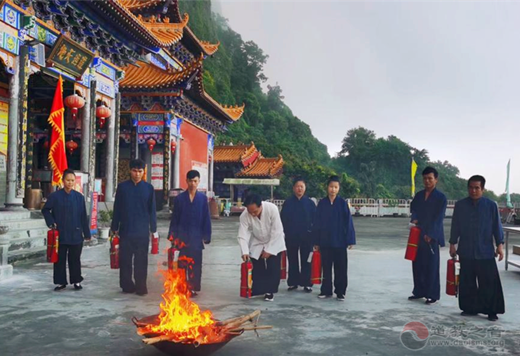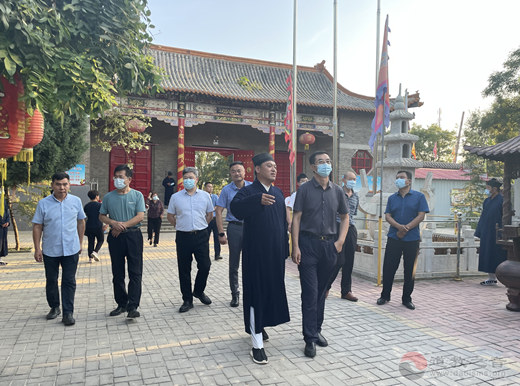
参展艺术家/Artist

邱木(邱启雄)/艺术家/宁波大学潘天寿建筑与艺术设计学院讲师
Li Chao(Qiu Qixiong), artist, Lecturer of Pan Tianshou School of architecture and art design, Ningbo University
艺术家自述/Artist Statement
枕上松涛 白夜行者
文/邱木
尽管曾经饱受诟病,文人绝对是中国传统社会里一个很重要、很特殊的群体。士绅建立起整个社会的现世秩序,而文人却在四民之外给世人塑造了一个具备精 神张力的理想世界。同时,文人又将这两个世界糅合成一体,形成一套自己独特 的思维及行为方式,在整个社会崇文思想的推动下,它成为中华民族隐藏在日常 话语里的点点滴滴,成为一种我们独特的心理结构。
中国人的语言和思维常常是带有诗性的。前几日跟朋友聊起一词:“松涛”, 觉得很有意思。“松”和“涛”,本是没有直接联系的两种事物,因为”人”的参与而产生联系。用波涛来比喻风吹松林此起彼伏的状态,这用到的实际上是一种福柯所说的毗邻相似,简单两个字,风吹松林的壮观画面有了,同时声音也有了。这样的例子很多,比如“麦浪”,比如“人潮”...西式语言中需要大量文字铺排的一件事,在这里往往省文寡事,一个比方就会让受众心领神会,这大概就是古人所说的“一超直入如来地也”。当然,也会有人认为还是现代文简洁。实际上, 在古人的表达方式中,那些冗长繁复的修辞语句往往并不在描述事件本身,而是描述主体对事件的感受。在这种语言的描述中,事物本身甚至成了次要,词句堆砌的那种节奏感,语言牵动的种种丰富想象,它所展开的根本就是一个与天地对话,与圣贤比肩的乌托邦。在这种一次又一次的实践和反复确认中,人们开始用语言去塑造世界,同时人自身也被语言反复塑造。
有人将文人比作西方泊来概念的“知识分子”或者“艺术家”,这是大谬特谬的,只能说这些概念之间存在某些相似性,但并不可彼此替代。对于文人来讲,他们并不是为了创造艺术,更不是为了得到或创造一种知识,所谓“无意于画而得于画”,艺术只是他们内修和传达性情的一种工具而已。到明清时期,职业文人的出现才使得文人这种文化身份逐渐跟艺术联结得愈发紧密,成为某种特定社会角色。对于他们来讲,艺术所塑造的那个精神世界,远比艺术本身重要,艺术只是他们窥见远处的一种手段,正所谓“因指见月,见月望指”。
在今天的时代语境下,我们说起文人并不是说要像文人那样去生活,去创造艺术,而是说当涉及到传统文化时,文人的思考方式往往才是我们解码传统的关键。文化本身正是通过文字、图像以及各种具体的事物所呈现、所象征,若想真正理解它就必须对它进行还原,进入文化的原境中去。近现代以来,由于西方现代主义思想的影响,我们对许多传统文化的理解常常更多地停留在语言技巧方面,而对其背后的叙事逻辑则刻意回避。“祛魅”在“祛”掉价值观后也将方法论一并祛除,以至于传统成为“过去式”的代名词,成为固执板结的一种概念和成见。另外人们谈起文人还有个更为切身的关系:那种深藏在我们血液里的文化基因竟愈发频繁地穿过历史迷雾,与古人联结在了一起。吟一首古诗,我们惊喜地发现古人在千百年前竟已洞悉今天的悲喜,那一咏一叹分明说的就是今天的我们。
在物质生活极致丰富的今天,我们的精神不再迫于粗砺的现实所需而单一, 它有着走向精致走向丰富的更多可能,反过来它也对我们的创造提出了更多要求。作为一个创造者而言,一方面,我们安然地享受着他人提供的种种便利,另一方面,我们又开始开始抗拒着这种“便利”,不甘于成为那种统一的、生冷的, 被他人诱导和设计的“大多数”。曾几何时,“撞衫”竟成了一种耻辱,城市的日新月异和彼此相似却让我们恍惚成为异乡客,我们愈发热切地去追索那些记忆中仅有的温度,也愈发自觉地去寻找更多真正属于自己的乌托邦。
“中国画”这个本就是在特殊时期刻意强调自我身份而产生的概念,却由于近现代以来的种种原因,其身份边界愈发模糊,材料、技法、主题都不能成为确认其身份的最终根据。很多人干脆放弃这种边界,在语言和精神的游离中,那生身地强大的文化向心力却又时常不经意地显现出来。后现代主义文化的愈见实质化在实现艺术表达方式、媒介、视角的极大可能后,所谓多元对话的话语场也愈发清晰起来,解构、交集、融合,让许多单向行进的叙事呈现出多极的发展, 结论成为一种不可预知的相遇和碰撞,在实践中诠释了后现代的原始意义。这给了中国画另外一种可能:在另一种语境中自行衍生,而非“计划生育”更非“借腹生子”,在这样一种新的游戏场里,规则成为奖品。
2015年开始,我逐渐更加关注学院以外的艺术世界,离开生活了十几年的武汉,去北京寻找一种“大视野”。在宋庄幽暗的工作室呆了一年,与形形色色的“艺术家”相识相忘,很遗憾,在无数次“交流”中我并没有成功地找寻到一条适合自己的道路。在借由工笔人物画这个细浸慢染的画种进行表达时,那些日夜艰辛获得的训练更像是一种规训,而一旦离开这种耳提面命(实际上它只是自己的一种想象),那些翻阅画册时的记忆碎片和自己梦境般的无限遐思竟然跳过逻辑层次自行组合起来。“白夜行者”系列从一开始本身就是矛盾体的组合,正如自己在三十出头的年龄所遭遇到的种种纠结。放弃图像思维,文本无意间开始成为我的底色,从混沌到清晰。正如“白夜行者”这一系列主题定出来之后,我才知道有一本书《白夜行》,“锦衣行”的画题出来后我才知道“锦衣夜行”这一典故。这种思维的撞车并未让我颓丧,却无比兴奋,正如日常阅读时偶然读到的一段话正是自己平日所想,甚至早先已写在日记里,对照之下文辞竟然相差无几, 那时便觉幸福。于是“观山火”我开始解构《丹枫呦鹿图》,并有意植入文本, 借题发挥;“窃徽宗”则干脆拿徽宗笔下的仙鹤入手,至于“宣和”、“子不语君莫问”慢慢开始自然流露出来,路径开始通畅,顾虑的只是尽量不要程式化。一日,忽然对着自己的画作想,这不正是古人的创作方式么?例如《洛神赋》很多画家都画过,而其中的经典图式则又被借用到另一幅画中,题上新的诗词被赋予新的意义,明清时期,此“复写”之风尤甚。用今天的概念来说,这可不就是解构?
在与古人的对话中寻找新的话题,通过这种对话照清自己,互文见义,也附生出新的作品,正如一枕黄梁,醒来翻阅周易或弗洛伊德:哦,原来我是这样的自己...在这个过程中我并不过分抬高古人,也不过分强调自我感受,作为创作主体的我只在对话结束后得到确认。德国当代哲学家、美学家迦德默尔在《真理与方法》中的一段话我很喜欢:“在成功的谈话中,谈话伙伴都处于事物的真理之下,从而彼此结合为一个新的共同体。谈话中的相互理解不是某种单纯的自我表现和自我观点的贯彻执行,而是一种使我们进入那种让我们自身也有所改变的公共性的转换...”——说得真好,不知我有没有事先也无意写下过这段话...
Despite the criticism, literati are definitely a very important and special group in the traditional Chinese society. The gentry established the order of the whole society, while the literati created an ideal world with spiritual tension outside the four people. At the same time, the literati combined the two worlds to form a set of their own unique way of thinking and behavior. Driven by the thought of advocating literature in the whole society, it became a little bit hidden in the daily discourse of the Chinese nation and a unique psychological structure.
Chinese language and thinking are often poetic. A few days ago, I chatted with my friend, "Songtao", and thought it was very interesting. "Song" and "Tao" are two things that have no direct connection, because of the participation of "people". The wave is used to describe the state of wind blown pine forest, which is actually a kind of adjacent similar, simple two words that Foucault said. The spectacular picture of wind blown pine forest is available, as well as the sound. There are many such examples, such as "wheat wave", such as "people wave"... One thing in western languages that requires a large number of words to be laid out, is often simple and easy here. One analogy will make the audience understand. This is probably what the ancients called "a super straight into the Tathagata". Of course, some people think it's still modern and concise. In fact, in the ancient way of expression, those lengthy and complicated rhetorical sentences often do not describe the event itself, but describe the subject's feelings of the event, in order to respond to the formation of history. In the description of this language, things themselves have even become secondary. The rhythmic sense of words and sentences and various imaginations influenced by the language are basically a utopia that talks with heaven and earth and shoulders with sages. In this kind of practice and confirmation again and again, people began to use language to shape the world, at the same time, people themselves were repeatedly shaped by language.
Some people compare literati to "intellectuals" or "artists" of the western concept of Polai, which is a big fallacy and a special fallacy. We can only say that there are some similarities between these concepts, but they can not be replaced by each other. For literati, they are not to create art, nor to get or create a kind of knowledge. The so-called "not to draw but to draw", art is just a tool for them to cultivate and convey their temperament. In Ming and Qing Dynasties, the emergence of professional literati made the literati's cultural identity more and more closely linked with art and become a specific social role. For them, the spiritual world created by art is far more important than art itself. Art is just a means for them to peep into the distance, which is the so-called "seeing the moon by referring to the reason, and seeing the moon by looking at the direction".
In today's context of the times, we don't say that literati should live and create art like literati, but that when it comes to traditional culture, literati's way of thinking is often the key for us to decode tradition. Culture itself is presented and symbolized by words, images and various concrete things. If you want to really understand it, you must restore it and enter the original culture. Since modern times, due to the influence of western modernism, our understanding of many traditional cultures often stays in language skills, while the narrative logic behind it is deliberately avoided. "Disenchantment" also dispels methodology after "Disenchantment" of values, so that tradition becomes a synonym of "past style" and a stubborn concept and stereotype. In addition, there is a more personal relationship when people talk about literati: the cultural gene hidden in our blood is more and more frequently linked with the ancients through the historical fog. Chanting an ancient poem, we were surprised to find that the ancients had understood today's joys and sorrows thousands of years ago, and that chanting and sighing clearly said that we are today.
In today's extremely rich material life, our spirit is no longer forced by the rough reality and single, it has more possibilities to move towards refinement and richness, in turn, it also puts forward more requirements for our creation. As a creator, on the one hand, we enjoy all kinds of conveniences provided by others. On the other hand, we begin to resist this kind of "conveniences" and are not willing to become the "majority" that is unified, cold, induced and designed by others. Once upon a time, "bumping clothes" has become a shame. The rapid changes and similarities of cities make us trance and become strangers. The more we pursue the only temperature in our memory, the more consciously we seek for more Utopias that really belong to us.
The concept of "Chinese painting" was originally created by deliberately emphasizing self-identity in a special period. However, due to various reasons in modern times, its identity boundary has become increasingly blurred, and materials, techniques and themes can not be the ultimate basis for confirming its identity. Many people simply give up this kind of boundary. In the dissociation of language and spirit, the strong cultural centripetal force of the birth place often appears inadvertently. After realizing the great possibility of artistic expression, media and visual angle, the so-called multi dialogue discourse field becomes more and more clear, deconstruction, intersection and fusion, which makes many one-way narrative show multi-polar development. The conclusion becomes an unpredictable encounter and collision, and explains the original meaning of Postmodernism in practice. This gives Chinese painting another possibility: in another context, it is derived by itself, rather than "family planning" or "giving birth by means of belly". In such a new game field, rules become prizes.
Since 2015, I have gradually paid more attention to the art world outside the college, left Wuhan, where I have lived for more than ten years, and went to Beijing to find a "broad vision". I spent a year in the dark studio of Songzhuang, and I met and forgot with all kinds of "artists". Unfortunately, I did not find a suitable way for myself in countless "exchanges". In the expression of meticulous figure painting, which is a kind of painting with fine immersion and slow dyeing, the hard training day and night is more like a kind of discipline. Once leaving this kind of face lifting (in fact, it is only one of my own imagination), the memory fragments and infinite reverie like my dream when I read the album actually jump over the logical level and combine by myself. From the beginning, the "White Night Walker" series itself is a combination of contradictory bodies, just like all kinds of entanglements encountered in their early thirties. Giving up image thinking, the text began to become my background unconsciously, from chaos to clarity. Just as a series of themes of "White Night Walker" were defined, I only knew that there was a book "white night walk", and I only knew the allusion of "Royal night walk" after the title of "Royal night walk" came out. The crash of this kind of thinking didn't let me down, but I was very excited. Just as I occasionally read a paragraph in my daily reading, it was exactly what I thought in my daily life. Even earlier, it had been written in my diary. By contrast, the words were almost the same. Then I felt happy. Therefore, I began to deconstruct the painting of red maple and Youlu in the view of mountain fire, and intended to implant the text and give full play to it by making use of the title; "stealing Huizong" simply started with the crane in Huizong's works. As for "Xuanhe" and "zibujunmowen", they gradually began to reveal naturally, and the path began to be smooth. The only concern was not to be stylized as much as possible. One day, I suddenly think of my own painting. Isn't this the way of creation of the ancients? For example, many painters in luoshenfu have painted, and the classical schema has been borrowed into another painting, and the new poems on the title have been given new meaning, especially in Ming and Qing Dynasties. In today's concept, is this deconstruction?
In the dialogue with the ancients, I look for new topics. Through this kind of dialogue, I can take a picture of myself, see the meaning through intertextuality, and also produce new works. Just like sleeping in the same bed, I wake up to read the book of changes or Freud: Oh, I'm like this... In this process, I don't elevate the ancients, nor overemphasize my own feelings, as a creation The subject's me is only confirmed at the end of the conversation. I like a passage of German contemporary philosopher and aesthetician Gadamer in truth and method: "in a successful conversation, the partners are all under the truth of things, so that they can combine into a new community. The mutual understanding in the conversation is not a kind of pure self-expression and the implementation of self-concept, but a kind of public transformation that enables us to enter into that kind of public transformation that also makes us change... "- it's good to say, I don't know if I have written down this sentence in advance or not...
参展作品/Artworks

白夜行者之窃徽宗/90*60 cm/绢本设色/2015

白夜行者之锦衣行/90*60 cm/绢本设色/2015

白夜行者之观山火/90*60 cm/绢本设色/2016

白夜行者之宣和/119*69 cm/绢本设色/2019

白夜行者之子不语君莫问/110*50 cm/纸本设色/2019

白夜行者之观琴/90*60 cm/纸本设色/2019

暗黑物质/120*60 cm/纸本设色/2015

暗黑物质/60*60 cm/纸本设色/2015

暗黑物质/60*60 cm/纸本设色/2015

戒离/115*80 cm/纸本设色/2012

即日启程/237*197 cm/纸本设色/2014

假面/180*90 cm/纸本设色/2012
参展经历/Exhibitions Attended
2004年 湖北省武汉市“万里长江观景第一台”书画摄影作品展绘画组三等奖。(湖北 武汉)
2006年 湖北省第二届“楚风杯”大学生书画大赛暨第二十一届大学生樱花笔会绘画组二等奖。(湖北 武汉)
2011年 参加湖北省建党90周年书画展。(湖北 武汉)
2012年 参加湖北省首届艺术节书画展。(湖北 武汉)
2013年 作品《未完待续》入选关山月美术馆、深圳318艺术商城“从这里开始——中国.学院青年艺术作品展”。(广州 深圳)
2013年 湖北美术学院“与大师同行”暨“昙华林之路”优秀作品展,获昙华林奖学金。(湖北 武汉)
2013年第二届广州大学生艺术博览会,获“全国十大青年艺术家”奖,作品被收藏。(广州 琶洲)
2014年 参加第十二届湖北省全国美展获优秀奖。(湖北 武汉)
2014年 大艺网第三届广州大学生艺术博览会。(广州 琶洲)
2015年 《前移的未来——第二届学院青年艺术作品展》。(广州 深圳)
2015年 湖北省工笔画协会第二届小幅作品展。(湖北 武汉)
2015年 上海青年艺术博览会。(上海)
2015年 水韵墨语 2015武汉新水墨艺术展。(湖北 武汉)
2015年 爱艺网艺术新锐作品展第一季。(北京)
2016年 首届中国工笔画省际联盟优秀作品提名展。(四川)
2016年 “水墨双生”青年水墨艺术家邀请展。(北京树美术馆)
2016年 国家艺术基金“繁星计划”——当代青年艺术家韩中交流展。(韩国首尔麦粒美术馆)
2019年 第十五届上海青年艺术大展。(上海)
关键字: 内容标签:绢本,艺术,文人,佑品空间,当代艺术,线上展览,绢本 艺术 文人 佑品空间 当代艺术 线上展览
如果本站的内容资源对您有所帮助

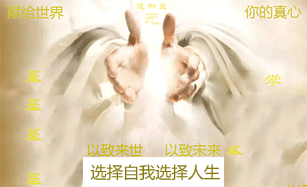
献给世界,你的真心,以致来世,以致未来


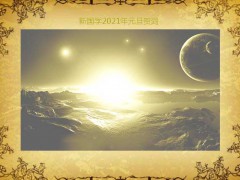
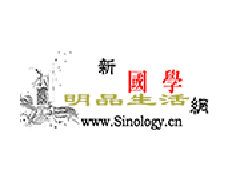
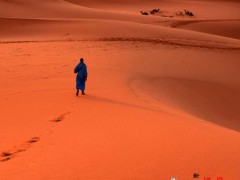
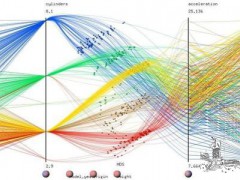
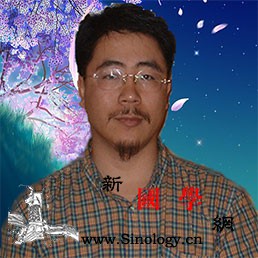
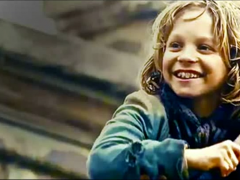
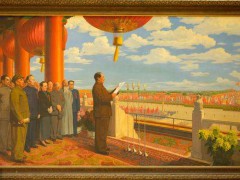
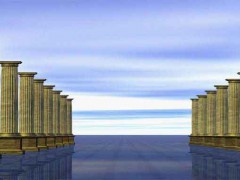
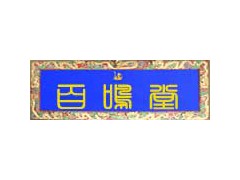
 推荐好文
推荐好文

